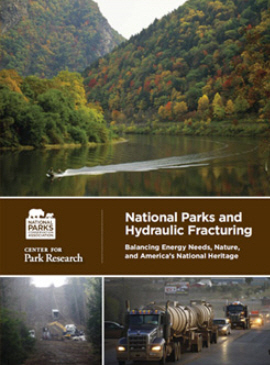Malcolm R. Campbell's Blog, page 225
July 12, 2013
Kelley Hazen: narrating a book can be ‘quite literally, transcendent’

Kelley Hazen
Today’s guest on Malcolm’s Round Table is Kelley Hazen, an artist who has appeared in multiple stage, screen and television productions. You may have seen her in “Nightingale in a Music Box,” “What Women Want,” and “Grey’s Anatomy.” She also lectures for the renowned Griffith Observatory in Los Angeles, CA.
Recently Kelley founded Storyteller Productions in Southern California with her husband, Bruce Carver. The boutique, state-of-the-art studio offers full recording services featuring intuitive narration. My three-story collection called Emily’s Stories, from Vanilla Heart Publishing, was Storyteller Productions fourth audio book.
Malcolm: When I listened to your narration of “Emily’s Stories,” I was reminded of my childhood when parents and grandparents read my favorite books to me on long, rainy afternoons and before I fell asleep at night. How do you achieve the being-there-with-the-listener effect?
Kelley: We have an amazing microphone – the vintage Sound Deluxe E49 – we selected that mic because of its perfect union with the timbre of my voice. As an artist and reader of audiobooks, I strive for a sense of…almost “sitting on the listener’s shoulder,” a quality of being in their heads, in their imaginations – a very intimate experience. I think when you combine that artistic goal with the technical mechanics of the right hardware you have the opportunity to create that sense of “being there with the listener.”
Malcolm: When you appear on the stage or work as a lecturer at the Griffith Observatory’s planetarium, there’s constant feedback from the audience. Is it difficult to change mindsets and figuratively work in a vacuum with voice-over work and audio book narration?
Kelley: No not at all, it’s actually strangely freeing because quite simply the story’s the thing. There is no hidden agenda, no coughing while I’m trying to make a point. : ) It’s just me, the mic, the story.
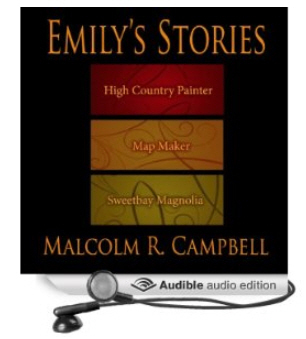 Malcolm: Can you walk me through what a typical narration project includes beginning with the first time you see the book or printed manuscript through the final production of the audio file? How do you prepare?
Malcolm: Can you walk me through what a typical narration project includes beginning with the first time you see the book or printed manuscript through the final production of the audio file? How do you prepare?
Kelley: We’ve usually gotten a feel for the book or the writer by either submitting an audition or pitch for the book, or because we’ve dealt with the publisher or author before. So we’ve either seen excerpts or been able to ascertain some sense of who we are dealing with. We believe that often, if not always, artists (writers/actors/publishers & editors if they do their job fully) have an underlying sense of how they want to be perceived in the world, what message they are sending, how they want to impact the greater good. At Storyteller we try to embody that – after all we are a conduit to get across the message that the writer is trying to convey by gathering these particular words together in this way.
Malcolm: I like that approach. Once you grok the story and its message, what additional preparation do you have?
Kelley: Then we just start breaking it down – a chapter at a time. That’s why it is most helpful when an author can send us the manuscript in electronic form. Although I will say our last two books were old school – regular ‘ol page-turning bound books. And it was a welcome respite from iPad’s and Word docs. But we always need two copies because the engineer, my husband Bruce, follows along as I record to watch for missed or mis-spoken words, but also has his own notations as he works for the editing and clean up. So I take it a chapter at a time – realizing the story, assessing the number of characters and their demands, looking up words I don’t know, learning languages.
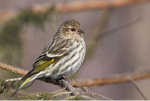
Pine Siskin
Our last two books – I learned fragments of three different languages and multiple dialects for the 25+characters in Petty Magic. For Maria of Agreda: Mystical Lady in Blue, a nonfiction about the life and efforts for canonization of a 17th century cloistered nun, I not only had to go to school to understand the Old World process of becoming a saint, but since the book was almost entirely set in Spain, accurate pronunciations of Kings, Viceroyalty, Popes, cities, mountain ranges, etc. were essential. For Emily’s Stories I found pictures of the birds that became such important characters for Emily and clips on YouTube by avid birders who had recorded the cry of each of these birds. Then when I gave the bird characters voices or imitated their calls, I tried to make it sound as much like that bird in real life as I was able. Also something just as simple as knowing where to take the breath to maintain the understanding of a line as it is read. All this work is done beforehand.
Malcolm: The pine siskin in my story “High Country Painter” thanks you! There’s more pre-narration work involved here than I imagined.

In the Studio
Kelley: Then we go into the studio and begin to record. We have to make sure that I don’t consume too much dairy so there is not too much phlegm to cause constriction in my voice. I have to eat so my stomach doesn’t growl. You would be amazed at what the intimacy of and the quality of these current day mics can pick up. It’s like HD for the ears. We usually record in two hours sessions. We can often do two session a day depending on our schedule. We keep separate files of snippets of new characters when they come along, once I’ve found their voice, so that when we come back to them I can hear how I did it the first time and keep it consistent. Consistency is key for the structure of a good audiobook.
Malcolm: Do you alternate the studio work and the preparation ?
Kelley: Anywhere from two to five chapters are prepped at a time. And during my prep time Bruce begins to edit. He listens to the whole thing all over again watching the book to look for missed words or times when I started again on a section but also any kind of outside noise or mouth noise or popping. He looks at an actual wave of my voice frequency–its in a program called Pro Tools. So he can hear but also see when extraneous sounds are present and cut them out or re EQ them by changing the sound around the errant noise. If I’ve missed anything or there is anything he can’t get out, we have a fix session.
[image error]
July 9, 2013
Saving the Florida Panther – I hope it’s not too late
“The Florida Panther is one of the most endangered mammals on the planet. Less than 160 cats remain in the wild. Most live around Okaloacoochee Slough, including the Florida Panther National Wildlife Refuge, near Naples.” – The Nature Conservancy
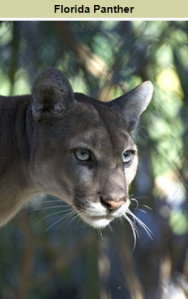 I grew up in North Florida during the 1950s and 1960s before the state became as overdeveloped as it is now. At the time, there was a captive Florida Panther at a local animal museum that had been injured either by guns or automobiles and was there to recover. It was my favorite animal in the place, one that still lived in the wild in the Florida Panhandle.
I grew up in North Florida during the 1950s and 1960s before the state became as overdeveloped as it is now. At the time, there was a captive Florida Panther at a local animal museum that had been injured either by guns or automobiles and was there to recover. It was my favorite animal in the place, one that still lived in the wild in the Florida Panhandle.
In my recent contemporary fantasy novel The Seeker, some of the action takes place at a wild, wonderful and somewhat forbidding tract of piney woods, swamps and wet prairies near the mouth of the Apalachicola River called “Tate’s Hell.” That name comes from the legendary man named Cebe Tate who chased a panther through the swamp because he thought it was killing his stock. He disappeared.
He was bitten by a rattlesnake. When searchers found him, his last words were, “My name’s Tate and I’ve been through hell.”
I grew up with that legend–one that included a folk song about Tate by Florida singer Will McLean–and knew the area well. So naturally, I mentioned the legend in my novel which is set at a time when Panthers were still there.
Catching up on the status of the Panther as I wrote the novel was a sad experience. While I was pleased to hear that in addition to the Nature Conservancy, organizations like Panther Net and Friends of the Florida Panther Refuge were working hard to protect the panther and its vanishing habitat, I was saddened to see how much ground and how many panthers had been lost since the says when I hiked in Tate’s Hell.
One conservation push in many areas of the country is wildlife corridors, protected strips or chunks of land that link up with vital habitats, creating a way for animals to travel between them. In some places, you will see green-space overpasses and underpasses routing animals past Interstate highways. Last year, the Nature Conservancy was able to protect a 1,278 acre tract in Glades County, Florida that Panthers in protected areas can use to increase the size of their range near Naples, FL.
According to the Nature Conservancy, “This acquisition will encourage the natural recovery of the Florida panther population by providing habitat where animals can den and stalk prey, and migrate from southern Florida to areas north of the river. Other species will benefit as well.” The range for a male panther is 200 square miles. The range for a female panther is a 75-mile block within the male’s territory.
I hope the efforts of hard-working people to save the Florida Panther will succeed. In a tourist and development-minded state, playgrounds often trump wild places and vital habitats in the eyes of government, Chambers of Commerce and the public. Too bad. It’s a short-sighted view of one’s world.


July 6, 2013
‘Emily’s Stories’ giveaway winners
 Thank you to everyone who left a comment here in to enter the giveaway for one of the three free copies of my three-story set called “Emily’s Stories.”
Thank you to everyone who left a comment here in to enter the giveaway for one of the three free copies of my three-story set called “Emily’s Stories.”
From the midnight, July 6th drawing, the winners are:
Dayna Gosnell
Robert Hays
Barbara Rogan
Congratulations, and I hope you enjoy the audio book. Please e-mail me at at malcolmrcampbell [at] yahoo [dot] com if you have any trouble with the coupon code for Audible or if several days go by and I haven’t been able to find your e-mail address and tell you that you won.
Coming Soon: “Emily’s Stories” was narrated by actress Kelley Hazen, whom many of you will have seen in “Nightingale in a Music Box,” “What Women Want,” “Grey’s Anatomy” and other film and television productions. I’ll have an interview with Kelley here on Malcolm’s Round Table soon.


Mark Your Calendars for the 2013 ‘Fall for Glacier’
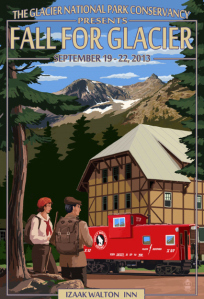 The merger between the Glacier National Park Fund and the Glacier Association has been completed, creating the Glacier National Park Conservancy. If you’re a fan of Glacier National Park, you can read about the organization’s current projects here.
The merger between the Glacier National Park Fund and the Glacier Association has been completed, creating the Glacier National Park Conservancy. If you’re a fan of Glacier National Park, you can read about the organization’s current projects here.
The traditional Fall for Glacier event will remain an annual part of the Conservancy’s program. Fall for Glacier is scheduled for September 19-22, 2013 at the Izaak Walton Inn at Essex, Montana on the south end of the park.
Activities include lectures, a photography session, red bus tour, a float trip on the Middle Fork of the Flathead River and hikes. Click here for a list of featured speakers.
The popular Backpacker’s Ball ends Fall for Glacier with dinner, dancing and an auction.
Make reservations soon before Fall for Glacier is sold out.


July 4, 2013
Review: ‘Glacier Ghost Stories,’ by Karen Stevens
“Glacier Ghost Stories,” by Karen Stevens, Riverbend Publishing (May 7, 2013), 103 pages, trade paperback.
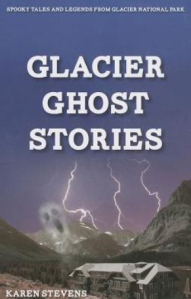 Karen Stevens (“Haunted Montana,” “More Haunted Montana”) has been collecting Montana ghost stories for thirty years and has been visiting Glacier National Park for forty years. Glacier Ghost Stories brings her passions together in a slim, but informative volume that follows her search for strange and inexplicable events at the park’s historic hotels.
Karen Stevens (“Haunted Montana,” “More Haunted Montana”) has been collecting Montana ghost stories for thirty years and has been visiting Glacier National Park for forty years. Glacier Ghost Stories brings her passions together in a slim, but informative volume that follows her search for strange and inexplicable events at the park’s historic hotels.
Steven’s book is, in one sense, a reporter’s travelogue: she talks about her investigative trips, the weather, the accommodations, and her interviews with hotel personnel. In the process, she includes a fair amount of park history with details for each hotel: Apgar Village Inn, Belton Chalet, Glacier Park Lodge, Lake McDonald Lodge, Many Glacier Hotel, Prince of Wales Hotel and Sperry Chalet.
Glacier Park Lodge celebrated its 100th anniversary this summer. The other hotels are elders in the lodging business as well. The hotels are busy during their short summer seasons. They’re isolated from the world throughout the rest of the year. The schedule and the wild country are, it seems, the perfect recipe for legends, yarns and a long list of things that defy logical explanation.
While they don’t advertise ghosts in travel brochures, hotel managers and long-time employees had a lot to day about things that go bump in the night: people who suddenly disappear, objects that move when nobody’s looking, doors that lock by themselves, music and other sounds from unoccupied rooms, footsteps in the dark. Stevens includes the room numbers where things seem to happen. Take note of these before your next visit.
Glacier Ghost Stories includes legends about Marias Pass, Going-to-the-Sun Road, Two Medicine Valley and the Belly River. In the book’s postscript, Stevens writes that visitors to Glacier and Waterton parks “follow in the footsteps o those who came before us: Native Americans, trappers, hunters, explorers and others whose spirits even today may roam the land they loved so much in life.”
Stevens does not hear about or witness the over-the-top paranormal happenings we associate with Edgar Allan Poe and Stephen King. She did uncover enough to make us wonder and to look over our shoulders the next time we visit any of the park’s hotels. The book is an engaging portrait from a ghostly point of view.
Malcolm R. Campbell is the author of paranormal short stories and four contemporary fantasy novels partially set in Glacier National Park.

A Glacier Park Novel


June 30, 2013
Goodbye to Heron Dance Literary and Art Studio
“Well, it’s been nineteen years of Heron Dance. Nineteen good years of creative experiments, of successes and failures, of life on a variety of edges: creative, financial, cultural. Everyone who has ever worked at Heron Dance has appreciated the kindness, the understanding and good energy of the people who call us, email us and write us letters. You’ve kept Heron Dance going. In response all we can say is that it has been our privilege to do this work. Anything else I write now, trying to describe how this feels after nineteen years, seems empty.” Roderick W. MacIver, Artist, Founder
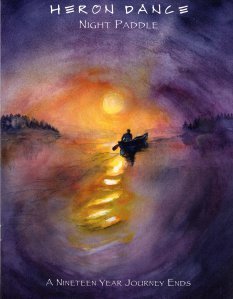 During the last nineteen years, I’ve purchased Heron Dance books, calendars, note cards and one print. Frames costing what they do, the print is not yet on the wall.
During the last nineteen years, I’ve purchased Heron Dance books, calendars, note cards and one print. Frames costing what they do, the print is not yet on the wall.
The artist and publisher’s philosophy of nature and impressionistic witnessing of it in paintings is exceptional:
“Water shapes my work. I co-create with water. I paddle the wild river, and then sit–or camp–on its banks. I paint the feelings and perceptions the river offers.”
Unfortunately, the publisher is closing its doors because—quite possibly—it had too many customers like me who didn’t have the budget for providing better support.
The final catalogue, shown here, displays the publisher’s liquidation sale. There’s the beautiful Heron Dance Book of Love and Gratitude at about 50% off. Notecards, as well, along with a beautiful selection of prints.
You can find the Heron Dance liquidation listing here.
Best wishes to Roderick W. MacIver—and thanks for all the work.
–Malcolm


June 28, 2013
Protecting Parks from Fracking
“From the eastern boundary of Glacier National Park in Montana, visitors can throw a stone and hit any of 16 exploratory wells and associated holding tanks, pump jacks, and machinery used to force millions of gallons of pressurized water, sand, and chemicals into shale rock formations thousands of feet beneath the surface.” – James D. Nations, Ph.D., Vice President for NPCA’s Center for Park Research

Center for Park Research
The existence of wells and the infrastructure of fracking within a stone’s throw of Glacier National Park is unacceptable. Some have said we are powerless to prevent it because those wells are within the sovereign Blackfeet Nation. To that, I ask, does sovereignty extend outside a nation’s borders?
Some years ago, the proposed Cabin Creek mine in British Columbia was stopped, in part, because it was likely to pollute rivers flowing from Canada into the U.S. The same is likely to be true of groundwater outside the immediate proximity of those wells on Blackfeet land.
James D. Nations writes in “Fracking and National Park Wildlife” that a third of the nation’s national parks are within twenty-five miles of shale basins. This means that a great number of wildlife habitats are potentially at risk. These risks come primarily in the areas of habitat fragmentation, water quality and quantity, and noise and air pollution.
There’s an old fashioned Libertarian principle that may finally be taken seriously as we realize more and more that the Earth is one community. The principle is that you cannot do anything on your land that harms your neighbor or your neighbor’s land.
The dangers of fracking and other forms of pollution are not restricted to the property where the industrial development occurs. Air and water carry the negative impacts many miles away. This is not acceptable.
While we may not be able to quickly wean ourselves away from older coal fired power plants where no alternatives are quickly available, fracking is relatively new. The complete nature of its threats and risks are not yet known. We don’t need it any more than we need new coal fired power plants.
We need, I think, to look not only at the threats to Glacier and other national parks, but to the places where we live and work. If we take life seriously, we can no longer permit one company or one nation or one developer to do as he wishes on the land he owns or leases when his actions affect people, habitats and wildlife many miles away.
Keep Xanterra Parks and Resorts out of Glacier National Park (Those doing the fracking next to Glacier are bidding to run Glacier’s historic hotels.)
National Parks and Hydraulic Fracturing from the Center for Park Research (There’s a PDF available for download.)


June 26, 2013
‘Emily’s Stories’ Audio Book Give-Away
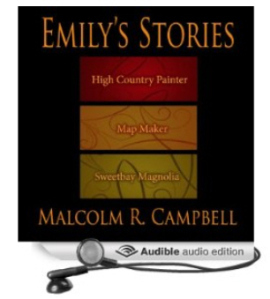 When my three-story set called Emily’s Stories about a fourteen year old Florida girl who talks to spirits came out on Kindle in March, it never occurred to me that my publisher would soon bring it out as an audio book as well. Hearing my words read back to me is an interesting experience.
When my three-story set called Emily’s Stories about a fourteen year old Florida girl who talks to spirits came out on Kindle in March, it never occurred to me that my publisher would soon bring it out as an audio book as well. Hearing my words read back to me is an interesting experience.
Two of the stories are set in the Florida Panhandle and one is set in Glacier National Park. All of them are suitable for family listening on car trips or during quiet times around the house in the evenings.
I have three FREE BOOK coupons for the Audible version of Emily’s Stories. So, it’s time for a give-away. Leave a comment on this post by midnight (eastern) July 6, 2013 for a chance to win a copy. I’ll put all the names in a cat chow sack, and draw out three.
The coupon code is, of course, the easiest to redeem if you already have an Audible account. If you don’t have one and happen to win, you can start an Audible account on Amazon and see if you like the subscription service. (It’s free for a month and you can cancel before the trail period ends.)
From the Publisher
Emily Walters is a sharp, inquisitive fourteen-year-old north Florida girl who loves maps, her rusty old bike, and the forest behind her house. Sometimes her dreams tell her the future and sometimes her waking hours bring wise birds and other spirits into her life. In these three short stories, join Emily in adventures and mysteries.
When her family vacations in the mountains in “High Country Painter,” a wise Pine Siskin tells her she must quickly learn how to paint dreams into reality to prevent an afternoon hike from becoming a tragedy.
In “Map Maker,” she’ll need her skills—and the help of a Chuck-will’s-widow—to fight a developer’s plans for bulldozing the sacred forest behind her house and replacing it with a subdivision.
In “Sweetbay Magnolia,” she’ll learn the secrets of her grandmother’s favorite tree, the crumbling almost-forever house down on the river, and why some ghosts would rather visit than haunt.
Best of luck ,


June 24, 2013
Keep Xanterra Parks and Resorts out of Glacier National Park
 The concession contract for operating the historic hotels and other visitor services within Glacier National Park, Montana, expires at the end of this year. Bids and proposals are now being accepted from prospective concessionaires by the National Park Service for a new sixteen year contract period to begin in January.
The concession contract for operating the historic hotels and other visitor services within Glacier National Park, Montana, expires at the end of this year. Bids and proposals are now being accepted from prospective concessionaires by the National Park Service for a new sixteen year contract period to begin in January.
Meanwhile, Glacier National Park and others have expressed concern about the fracking underway on Blackfeet Nation lands on the park’s eastern boundary. You can learn more about this on a Blackfeet Anti-Fracking Coalition started by a tribal member on Facebook.
The purpose of this post, however, is to call your attention to a MoveOn.Org petition that questions allowing the man responsible for the fracking to become a concessionaire in the park. Here’s the petition:
Xanterra Parks and Resorts Inc. is bidding to operate all concessions in Glacier National Park for 16 years.
They are owned by one of the wealthiest billionaires in the nation, Philip Frederick Anschutz.
His Anschutz Exploration Corp. is currently drilling exploratory wells to frack the Blackfeet Reservation immediately east of Glacier National Park.
Fracking is one of the greatest threats facing Glacier National Park.
It is unconscionable that the National Park Service would give such a coveted contract Phil Anschutz.
That’s why I signed a petition to National Parks Service, Director Jonathan Jarvis, which says:
“Do not award a lucrative concessions contract for Glacier National Park to billionaire Phil Anschutz while he is threatening the future of the park with his fracking on abutting land.”
Will you sign this petition? Click here.
Thank you,
Malcolm


June 23, 2013
Briefly Noted: ‘ The Patience of Pearl: Spiritualism and Authorship in the Writings of Pearl Curran’
 Pearl Lenore Curran, a St. Louis music teacher, wrote (or possibly channeled) multiple novels and hundreds of poems between 1913 and and 1937 under the name Patience Worth. Curran was not a spiritualist. She tried out a friend’s Ouija board and, depending on one’s viewpoint, she began communicating with either her subconscious mind or a discarnate entity who lived in England in the 1600s.
Pearl Lenore Curran, a St. Louis music teacher, wrote (or possibly channeled) multiple novels and hundreds of poems between 1913 and and 1937 under the name Patience Worth. Curran was not a spiritualist. She tried out a friend’s Ouija board and, depending on one’s viewpoint, she began communicating with either her subconscious mind or a discarnate entity who lived in England in the 1600s.
The lure of spiritualism brought many people to Curran’s door, some of who listen to the readings, reported the phenomena in books and newspapers, and even spoke with Patience through Mrs. Curran. Some suggested Patience was a real spirit. Others said Curran was being coached, for she had no educational background for speaking and writing about 17th century England using many words and phrases that were not common in the 20th century United States.
Regardless of the source of the material, it was not only voluminous, but attracted rave reviews. To learn more about Curran and Patience Worth, see the September 2010 “Smithsonian Magazine” article “Patience Worth: Author From the Great Beyond.”
Like books such as Irving Litvag’s Singer in the Shadows: The Strange Story of Patience Worth and Casper Yost’s Patience Worth: A Psychic Mystery, the “Smithsonian” article focuses chiefly on historical facts and the opinions of spiritualists. Professor Shea’s The Patience of Pearl focuses on the works themselves within the scope of Curran’s life and Patience Worth’s literary voice.
In his introduction, Shea writes that “it does seem odd that a woman who wrote with brief but notorious success less than one hundred years ago could still be, as Lucky Jim once put it, so strangely neglected.” He suggests that the way they were written discredited them from the beginning as part of spiritualism’s table tapping and purported revelations from entities from another time or place.
From the Publisher: “The Patience of Pearl uncovers more of Curran’s (and thus Patience Worth’s) biography than has been known before; Daniel B. Shea provides close readings of the Patience-dictated writings and explores the historical and local context, applying current cognitive and neuro-psychology research…Novelistic in its own way, Curran’s life included three husbands and a child adopted on command from Patience Worth. Pearl Curran enjoyed a brief period of celebrity in Los Angeles before her death in 1937. The Patience of Pearl once again brings her the attention she deserves—for her life, her writing, and her place in women’s literary history.”
In one of her poems, Patience/Pearl wrote:
Lo, are my songs like birds
Within a wicker hung, and thou,
Beloved, hast loosed the latch
And let them free!
Shea’s thorough overview is an open door.
–Malcolm




